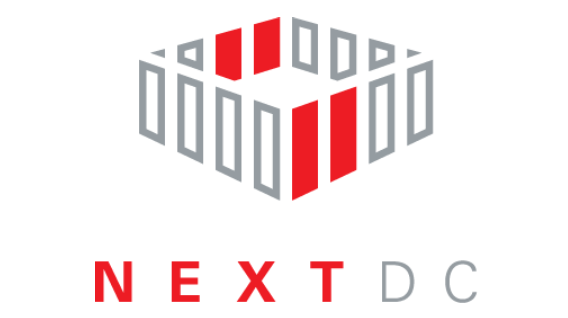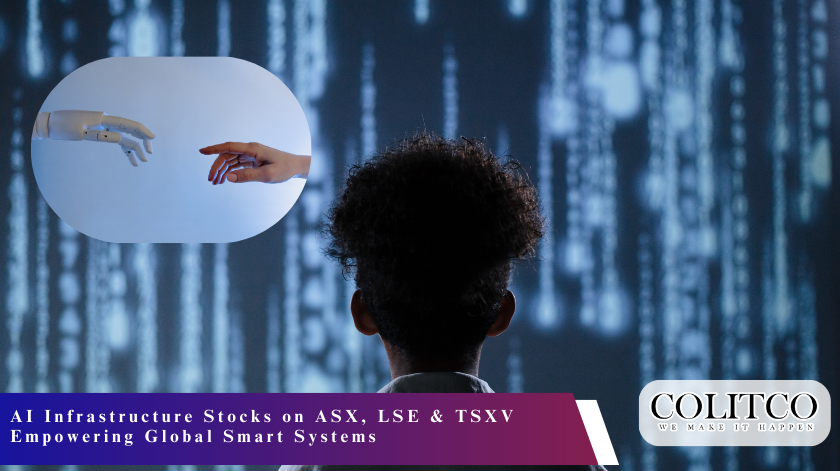Imagine this: In a remote copper mine 400 kilometres north of Adelaide, autonomous trucks navigate winding paths while AI-powered sensors predict equipment failures before they happen. Meanwhile, in a bustling London financial district, intelligent automation processes thousands of loan applications in minutes. Across the Atlantic in Vancouver, an investment firm channels capital into the next generation of artificial intelligence startups. These scenarios aren’t science fiction – they’re happening right now, powered by companies listed on three exchanges that most investors overlook when discussing AI infrastructure.
While Silicon Valley giants dominate headlines with their multi-billion-dollar AI announcements, a quieter revolution unfolds across the Australian Securities Exchange (ASX), London Stock Exchange (LSE), and TSX Venture Exchange (TSXV). These markets host innovative firms building the hardware, software, and infrastructure essential for AI’s global proliferation. From neuromorphic chips processing data at the edge to enterprise automation platforms streamlining business operations, companies on these exchanges are democratising AI access and creating the backbone for tomorrow’s intelligent world.
The global AI infrastructure market reached $87.6 billion in 2025 and is forecast to climb to $197.64 billion by 2030, registering a robust 17.71% compound annual growth rate. This explosive growth reflects the decisive shift from limited pilots to production-scale deployments across enterprises, hyperscalers, and public-sector agencies worldwide. What’s particularly striking is how non-US regions are contributing to this expansion, with Asia-Pacific delivering the fastest 19.1% CAGR and European initiatives gaining momentum through sovereign AI strategies.
The Global AI Infrastructure Revolution: Beyond Silicon Valley
Traditional thinking places artificial intelligence innovation squarely in the United States, dominated by mega-corporations with unlimited budgets. However, this perspective misses a crucial reality: AI infrastructure spending will surpass $200 billion globally by 2028, with organizations outside the US driving significant portions of this growth. The International Data Corporation reports that companies increased spending on compute and storage hardware infrastructure for AI deployments by 97% year-over-year in the first half of 2024 alone, reaching $47.4 billion.
This surge isn’t concentrated in one geographic region. While the United States maintains its leadership position with 59% of total spending in the first half of 2024, other regions are accelerating rapidly. The People’s Republic of China accounts for 20% of global spending, followed by Asia-Pacific (excluding China) at 13%, and Europe, Middle East & Africa at 7%. More tellingly for investors, IDC expects China to grow at the fastest CAGR of 35% over the next five years, followed closely by the USA at 34%, demonstrating the global nature of AI infrastructure expansion.
The driving forces behind this international AI infrastructure boom extend far beyond technological curiosity. Edge computing requirements push processing power closer to data sources, industrial automation demands real-time decision-making capabilities, and enterprise digitalisation creates insatiable appetites for intelligent systems. These needs can’t be satisfied by centralised cloud services alone they require distributed infrastructure, specialised hardware, and localised intelligence that companies across ASX, LSE, and TSXV are uniquely positioned to provide.
Consider the fundamental shift occurring in AI deployment patterns. While training large language models requires massive centralised computing resources, inference workloads where AI models actually perform useful work increasingly happen at the edge. This creates opportunities for companies developing neuromorphic processors, edge computing platforms, and industrial AI solutions that don’t require the scale of hyperscaler data centres but deliver immediate value to end users.
The tech infrastructure boom has already created significant opportunities for global exchanges, as demonstrated by recent major projects including the Stargate initiative. However, these headline-grabbing investments represent just the tip of the iceberg. The real infrastructure revolution happens through thousands of smaller deployments, industry-specific applications, and specialised solutions that companies outside the US are developing with remarkable innovation.
ASX: Australia’s AI Hardware and Data Centre Powerhouse
Australia’s mining heritage and technological innovation converge on the ASX, creating unique opportunities in AI infrastructure that reflect the continent’s industrial strengths and digital ambitions. The exchange hosts some of the most innovative edge AI companies globally, alongside data centre operators and technology firms positioning themselves for the next wave of intelligent automation.
BrainChip: Pioneering Neuromorphic Computing at the Edge
BrainChip Holdings Ltd (ASX: BRN) stands as perhaps the most compelling pure-play neuromorphic computing stock globally, developing brain-inspired processors that could revolutionise edge AI applications. The company’s Akida platform represents a fundamental departure from traditional computing architectures, using event-driven processing that mimics neural networks in the human brain.
Unlike conventional processors that continuously consume power regardless of workload, BrainChip’s neuromorphic chips only activate when input changes occur. This event-based approach delivers extraordinary power efficiency measured in microwatts rather than watts making AI processing viable in applications where traditional chips simply cannot operate. Think hearing aids that can perform speech recognition, industrial sensors running for years on battery power, or autonomous drones capable of real-time obstacle detection without draining their energy systems.
The company’s recent developments underscore its technological leadership. In August 2025, BrainChip launched the Akida Cloud platform, providing instant access to the latest neuromorphic technology without requiring physical hardware. This developer-first approach enables rapid prototyping and accelerates the adoption cycle for edge AI applications. The platform features the latest version of Akida’s 2nd generation technology, building on State-Space Models with time-sensitive, event-driven frameworks ideal for real-time streaming applications.
BrainChip’s technology finds applications across aerospace, autonomous vehicles, robotics, industrial IoT, consumer devices, and wearables sectors where power efficiency and real-time processing create competitive advantages. The company has also secured development contracts, including a $1.8 million agreement with the Air Force Research Laboratory for neuromorphic radar signal processing technologies, demonstrating the strategic importance of its innovations.
Financially, BrainChip reported a narrowed net loss of $9.36 million in H1 2025, representing a 19% improvement year-over-year. While still in the development phase, the company’s strategic partnerships and technological roadmap position it advantageously as neuromorphic computing transitions from research curiosity to commercial necessity. CEO Sean Hehir’s recent strategic updates highlight partnerships for automotive and IoT applications, with GenAI enhancements on the development roadmap.
Data Centre Infrastructure: The Physical Foundation of AI
Australia’s strategic advantages in renewable energy and political stability make it an increasingly attractive location for AI data centre infrastructure. NEXTDC (ASX: NXT), the country’s leading data centre operator with a market capitalisation of $6.75 billion, exemplifies this trend. The company operates 13 data centres across Australia, New Zealand, Japan, and Malaysia, supporting over 1,800 customers with cloud infrastructure needs.

NEXTDC’s facilities are specifically designed to support high-performance computing workloads, including AI training and inference applications. The company partners with major cloud service providers including Amazon Web Services, Microsoft Azure, and Google Cloud, positioning itself as critical infrastructure for the region’s AI ecosystem. In FY2024, NEXTDC recorded $404.3 million in revenue, up 25% year-over-year, reflecting strong demand for data centre services.
The company’s expansion plans align with growing AI infrastructure requirements. Power and cooling constraints represent significant challenges for AI deployments, with Gartner projecting that power shortages will affect 40% of AI data centres by 2027. NEXTDC’s focus on renewable energy sourcing and advanced cooling technologies addresses these concerns while positioning Australia as a viable alternative to traditional data centre locations.
Enabling Technologies and Industrial Applications
The ASX hosts numerous other companies contributing to AI infrastructure development. Goodman Group (ASX: GMG) benefits from the “pipes, power, and property” boom, developing properties specifically designed for AI data centres with specialised power and cooling requirements. With a market capitalisation approaching $38 billion, Goodman represents the intersection of real estate and technology infrastructure.
Megaport (ASX: MP1) provides high-speed networking solutions essential for AI workloads, enabling low-latency connections between data centres, cloud services, and edge computing locations. The company’s software-defined networking approach allows rapid provisioning of bandwidth and connectivity, crucial for AI applications requiring predictable network performance.
Weebit Nano (ASX: WBT) develops resistive RAM technology that could transform AI memory systems, offering persistent storage with lower power consumption than traditional memory technologies. As AI models grow larger and more complex, memory bandwidth and power efficiency become critical bottlenecks that innovative memory technologies can address.
These companies collectively represent Australia’s comprehensive approach to AI infrastructure, combining hardware innovation, data centre development, and enabling technologies. The ASX’s strong performance in technology stocks reflects investor recognition of these opportunities, with the information technology sector delivering impressive gains across multiple sessions.
LSE: Enterprise AI and Financial Technology Leadership
London’s position as a global financial centre creates unique advantages for enterprise AI development, particularly in sectors requiring sophisticated automation, regulatory compliance, and risk management. The London Stock Exchange and its Alternative Investment Market (AIM) host companies at the forefront of intelligent automation, process optimisation, and AI-powered business solutions.
Blue Prism: The Enterprise Automation Pioneer
The story of Blue Prism Group PLC illustrates both the opportunities and evolution of enterprise AI on the LSE. Originally listed in London, Blue Prism pioneered robotic process automation (RPA) and coined much of the terminology now standard in intelligent automation. The company’s acquisition by SS&C Technologies for $ 1.6 billion in March 2022 validated the strategic importance of enterprise AI platforms while demonstrating the value creation possible in this sector.

Blue Prism Group plc
Under SS&C ownership, Blue Prism continues to influence enterprise AI through its comprehensive automation platform. The SS&C Blue Prism Enterprise AI solution combines RPA, business process management, and artificial intelligence to create what the company describes as “agentic automation” systems capable of making autonomous decisions and adapting to changing conditions.
The platform’s capabilities extend far beyond simple task automation. Modern implementations incorporate generative AI, natural language processing, and machine learning to handle complex business processes. For example, SS&C Technologies combined the platform with generative AI to process loan credit agreements 95% faster while eliminating errors, demonstrating the transformative potential of enterprise AI when properly implemented.
Blue Prism’s client success stories illustrate the breadth of enterprise AI applications. ABANCA utilises the platform with GPT-4 and NLP to reimagine banking services, while Danica Pension reports that 30% of their staff is digital, with 80% of human employees working alongside digital colleagues. This human-AI collaboration model represents the future of enterprise operations across multiple industries.
The company maintains its position as a leader in Gartner’s Magic Quadrant for RPA for the seventh consecutive year in 2025, reflecting sustained innovation and market execution. More than 2,800 customers worldwide run operations on SS&C Blue Prism platforms, spanning financial services, insurance, healthcare, banking, and numerous other sectors.
LSE’s AI Investment Ecosystem
Beyond Blue Prism’s influence, the LSE hosts several other companies contributing to AI infrastructure development. Pri0r1ty Intelligence Group PLC represents a new generation of AI SaaS companies listed on AIM, focusing on enterprise intelligence solutions. Defence Holdings PLC has partnered with Whitespace to develop secure AI infrastructure specifically designed for defence applications, addressing the unique requirements of government and military users.
The London Stock Exchange Group (LSEG) itself demonstrates AI integration through partnerships with Microsoft, enhancing post-trade services and financial analytics with intelligent automation. This vertical integration approach where exchange operators develop AI capabilities for their own operations provides both operational benefits and strategic positioning for serving clients with similar needs.
The UK’s regulatory environment supports responsible AI deployment while encouraging innovation. Government initiatives attracting £200 million daily in private AI investment since mid-2024 demonstrate policy support for the sector. This regulatory clarity combined with access to European markets creates advantages for LSE-listed AI companies seeking to scale internationally.
Financial Services AI Innovation
London’s concentration of financial institutions creates natural demand for AI infrastructure, particularly solutions addressing regulatory compliance, risk management, and customer experience. The city’s fintech ecosystem includes numerous companies developing AI-powered solutions for trading, wealth management, insurance, and banking applications.
The intersection of traditional financial services with AI technologies creates opportunities for companies capable of navigating complex regulatory requirements while delivering measurable business benefits. London’s deep expertise in both finance and technology provides competitive advantages in developing solutions that address real-world business challenges rather than theoretical use cases.
Enterprise AI adoption in the UK emphasises responsible deployment, with 36% of organisations in expansion stages according to recent surveys. This measured approach contrasts with the “move fast and break things” mentality often associated with Silicon Valley, potentially creating more sustainable and reliable AI implementations that generate long-term value for stakeholders.
TSXV: Venture Capital Meets AI Innovation
Canada’s TSX Venture Exchange has evolved into a global hub for early-stage AI companies, investment vehicles, and infrastructure ventures that bridge the gap between startup innovation and public market access. The exchange’s structure particularly suits companies developing emerging technologies, providing capital access while maintaining the flexibility needed for rapidly evolving AI markets.
Alset AI Ventures: Public Access to AI Investment
Alset AI Ventures Inc. (TSXV: GPUS) exemplifies the TSXV’s role in democratising access to AI investment opportunities. Formerly known as Alset Capital Inc., the company rebranded in August 2024 to focus specifically on artificial intelligence technologies, providing public market investors with exposure to the AI revolution through a diversified investment approach.
As a publicly traded investment issuer, Alset offers unique advantages over traditional private AI funds. The company provides liquid access to AI ventures, eliminating the typical lock-up periods and minimum investment requirements associated with private equity or venture capital funds. This public structure enables smaller investors to participate in AI’s exponential growth while maintaining the ability to adjust positions based on market conditions.
Alset’s investment strategy encompasses multiple aspects of the AI ecosystem. The company strategically invests in AI-driven companies, cloud compute resources, and decentralised AI infrastructure. This diversified approach recognises that AI success requires not just innovative algorithms but also the computing power, data infrastructure, and platform technologies needed to scale intelligent applications.
The company’s recent executive appointments underscore its serious approach to AI investment. In November 2024, Alset appointed Julie McClure as President, bringing two decades of Wall Street and venture capital experience to the role. McClure’s background includes supporting numerous C-Suite executives and founders in launching, funding, and scaling high-growth ventures, positioning her to identify and nurture promising AI companies within Alset’s portfolio.
Alset’s model blends investment capital with hands-on support, providing portfolio companies with access to cloud resources, strategic guidance, and business development expertise. This approach addresses a critical challenge in AI development: many promising technologies fail to reach market due to infrastructure constraints or commercialisation difficulties rather than technical limitations.
Infrastructure and Industrial AI on TSXV
The TSXV hosts several other companies contributing to AI infrastructure development. xTAO raised $22.8 million in 2025 financing to build Bittensor-based decentralised AI infrastructure, addressing industrial applications requiring distributed intelligence. This decentralised approach enables AI processing without relying on centralised cloud services, important for applications in remote locations or sensitive industrial environments.
HIVE Digital Technologies topped TSXV’s 2024 technology rankings by combining blockchain and AI infrastructure for efficient computing. The company’s approach demonstrates how traditional cryptocurrency mining infrastructure can pivot to support AI workloads, particularly during periods when cryptocurrency mining profitability decreases. This dual-purpose infrastructure provides operational flexibility while supporting the growing demand for AI compute resources.
AI Artificial Intelligence Ventures Inc. (TSXV: AIVC) represents another investment vehicle focused on early-stage AI companies. These investment issuers provide crucial capital for AI startups that might otherwise struggle to access funding through traditional channels, particularly during the valley of death between proof-of-concept and commercial viability.
The TSXV’s venture capital approach suits AI development particularly well. Unlike mature technology sectors where incremental improvements dominate, AI remains in a phase of fundamental innovation where breakthrough technologies can create entirely new markets. The exchange’s willingness to list early-stage companies with limited revenue but significant potential provides essential capital for AI research and development.
Global X AI Infrastructure ETF Access
For investors seeking broader exposure to AI infrastructure trends, the Global X Artificial Intelligence Infrastructure ETF (TSXV: MTRX) provides diversified access to companies developing AI hardware, software, and infrastructure globally. This ETF approach enables smaller investors to gain exposure to AI infrastructure trends without requiring detailed knowledge of individual companies or technologies.
The ETF structure addresses a key challenge for retail investors interested in AI infrastructure: the technical complexity and rapid evolution of the sector makes individual stock selection particularly challenging. By providing professional management and diversified exposure, ETFs enable broader participation in AI infrastructure growth while managing concentration risk.
Canada’s regulatory environment supports AI development through government initiatives and research funding. The country’s emphasis on ethical AI development and responsible innovation creates advantages for companies building sustainable AI solutions rather than pursuing short-term technological advantages without considering long-term implications.
The Multi-Decade AI Investment Megatrend
The transformation of AI from research curiosity to essential business infrastructure represents one of the most significant technological shifts since the advent of the internet. Unlike previous technology cycles characterised by boom-bust patterns, AI adoption appears to follow a more sustainable trajectory based on measurable productivity gains and clear return on investment.
Fundamental Drivers of Sustained Growth
Multiple converging factors support the thesis that AI infrastructure development represents a multi-decade investment opportunity rather than a short-term technological fad. Private investments in AI reached $100 billion in 2024, growing 80% year-over-year, while generative AI funding jumped 76.4% to $644 billion in 2025. These investment levels reflect not speculative enthusiasm but practical recognition of AI’s productivity enhancement potential.
McKinsey research indicates that organisations tracking AI key performance indicators (KPIs) achieve the most significant EBITDA improvements, underscoring the importance of strategic AI deployment. This suggests that successful AI implementation requires more than technology adoption it demands systematic integration with business processes and performance management systems that companies across ASX, LSE, and TSXV are developing.
The shift from experimental AI deployments to production-scale implementations drives sustained infrastructure demand. Stanford’s AI Index notes a 21.3% rise in AI-related legislative mentions, signalling regulatory recognition and systematic integration into policy frameworks. This institutionalisation of AI across government and business creates stable demand for infrastructure solutions rather than cyclical adoption patterns.
Edge Computing and Industrial AI Applications
Perhaps the most compelling aspect of the current AI infrastructure cycle involves the movement of intelligence from centralised data centres to distributed edge locations. Gartner predicts that by 2028, 15% of enterprise decisions will be autonomous, requiring real-time processing capabilities that centralised cloud services cannot provide effectively.
This edge computing trend particularly benefits companies developing specialised hardware, industrial AI applications, and infrastructure solutions. Unlike hyperscaler data centres that require massive capital investments and economies of scale, edge AI infrastructure can be deployed incrementally and adapted to specific industry requirements.
Industrial AI applications demonstrate particularly strong return on investment profiles. McKinsey forecasts that AI could automate 30% of US work hours by 2030 while creating net job gains through productivity improvements and new industry development. This positive-sum outcome contrasts with previous automation waves that primarily substituted technology for human labour without creating equivalent value elsewhere in the economy.
Global Market Expansion Opportunities
The international nature of AI infrastructure development creates opportunities for companies to scale beyond their domestic markets while addressing region-specific requirements. Asia-Pacific’s 19.1% CAGR in AI infrastructure spending reflects both economic development and technological advancement in markets that were previously underserved by AI applications.
European Union initiatives supporting domestic AI development, including AI factories and common data spaces announced in February 2024, create demand for localised infrastructure solutions. These sovereign AI strategies favour companies capable of providing alternatives to US-dominated cloud services while meeting regional regulatory requirements.
The mining and resources sector demonstrates AI adoption potential across multiple applications, from exploration and extraction to processing and logistics. Australia’s position as a resources superpower combined with advanced technology capabilities creates unique opportunities for AI infrastructure companies serving industrial markets globally.
Challenges and Investment Considerations
While the long-term AI infrastructure opportunity appears compelling, several significant challenges could impact investment returns and company execution. Understanding these risks enables more informed investment decisions and appropriate portfolio management strategies.
Technical and Infrastructure Constraints
Power consumption represents perhaps the most immediate challenge facing AI infrastructure development. Data centres supporting AI workloads require 156 GW of capacity by 2030, straining existing electrical grid systems and requiring substantial infrastructure upgrades. This power demand creates opportunities for companies developing efficient computing solutions while potentially constraining growth for power-intensive approaches.
The skills shortage in AI development affects 53% of deployments according to Gartner research, creating bottlenecks in implementation and scaling. This challenge particularly impacts smaller companies that cannot compete with hyperscalers for specialized talent, potentially limiting execution capabilities despite having promising technologies.
Lead times for AI infrastructure components stretch to 12-18 months, with pricing often exceeding MSRP by up to 50% until new capacity comes online after 2026. These supply chain constraints favour companies with established supplier relationships and component inventory, while potentially disadvantaging new market entrants or rapidly scaling companies.
Market Competition and Consolidation Risks
The AI infrastructure market faces potential consolidation as larger technology companies acquire promising startups and specialised solution providers. While this creates exit opportunities for investors, it also increases competitive pressure on independent companies that must demonstrate clear differentiation to maintain market positions.
US technology companies’ dominance in foundational AI technologies, particularly semiconductors and software frameworks, creates dependencies for international AI infrastructure companies. Export restrictions and trade tensions could impact supply chains and market access, requiring companies to develop alternative supplier relationships or localised capabilities.
The rapid pace of AI technological development means that current leading technologies could become obsolete relatively quickly. Companies must invest continuously in research and development while managing the risk that breakthrough innovations could disrupt their existing product portfolios.
Regulatory and Policy Uncertainties
Different regulatory approaches to AI across jurisdictions create compliance complexities for companies operating internationally. European emphasis on AI ethics and governance contrasts with more permissive approaches in other regions, requiring companies to manage multiple regulatory frameworks while maintaining competitive capabilities.
Data privacy and security requirements increasingly impact AI infrastructure design and deployment. Companies must balance AI capability with privacy protection, potentially limiting some applications while creating opportunities for privacy-preserving AI technologies.
Government AI policies continue evolving rapidly, creating both opportunities and risks for infrastructure companies. Supportive policies can accelerate market adoption, while restrictive regulations could limit addressable markets or require significant compliance investments.
Also Read: Perenti Limited Smashes Financial Records with $3.5 Billion Revenue and Record Cash Generation
Investment Strategies for AI Infrastructure Exposure
Given the complexity and rapid evolution of AI infrastructure markets, investors should consider multiple approaches to gaining exposure while managing risk appropriately. The ASX, LSE, and TSXV offer different risk-return profiles suitable for various investment objectives and risk tolerances.
Direct Equity Investment Approaches
Pure-play AI infrastructure companies like BrainChip offer direct exposure to specific technologies and market segments. These investments provide leverage to AI adoption in targeted applications but carry concentration risk and execution risk associated with smaller companies. Investors should evaluate technical differentiation, management quality, customer adoption, and financial resources when selecting individual companies.
Diversified technology companies with AI infrastructure components provide more balanced exposure while reducing single-company risk. Companies like NEXTDC benefit from AI infrastructure trends while maintaining revenue from traditional data centre services, providing more stable cash flows during AI market volatility.
Investment holding companies like Alset AI Ventures offer portfolio exposure to multiple AI companies while providing professional management and due diligence capabilities. This approach enables smaller investors to access AI venture opportunities that would otherwise require substantial minimum investments or industry expertise.
Thematic and Sector-Based Exposure
Exchange-traded funds focused on AI infrastructure themes provide diversified exposure while enabling liquid trading and professional management. These funds typically include companies across the AI value chain, from semiconductor manufacturers to software developers and application companies.
Technology sector ETFs with significant AI infrastructure exposure offer broader technology exposure while capturing AI infrastructure trends. This approach provides some AI leverage while maintaining diversification across multiple technology themes and market cycles.
International equity exposure through ASX, LSE, and TSXV-listed companies provides geographic diversification while accessing AI infrastructure developments outside US markets. This approach captures different regulatory environments, cost structures, and market opportunities while reducing dependence on US technology sector performance.
Risk Management and Portfolio Integration
AI infrastructure investments should typically represent a portion of broader technology allocations rather than standalone portfolio positions. The sector’s volatility and technological uncertainty require risk management through diversification and position sizing appropriate to individual risk tolerance.
Dollar-cost averaging into AI infrastructure positions can help manage timing risk while building exposure over time. The sector’s rapid development and periodic volatility make entry timing particularly challenging, favouring systematic investment approaches over lump-sum positions.
Regular portfolio rebalancing becomes particularly important in rapidly growing sectors like AI infrastructure. Position sizes can quickly become overweighted relative to investment objectives, requiring periodic adjustment to maintain appropriate risk levels.
Also Read: Carbonxt Announces Non-Renounceable Pro-Rata Entitlement Loyalty Options Offer To Raise $0.7m
Conclusion: Building Tomorrow’s Intelligent World
The convergence of artificial intelligence and global infrastructure development represents one of the most significant investment opportunities of the next decade. While Silicon Valley companies capture headlines and venture capital attention, the practical implementation of AI across industries requires the specialised hardware, industrial applications, and infrastructure solutions that companies listed on ASX, LSE, and TSXV are uniquely positioned to provide.
Frequently Asked Questions
What are AI infrastructure stocks?
AI infrastructure stocks are companies that provide the essential hardware, software, and services needed to develop, deploy, and operate artificial intelligence systems. This includes everything from neuromorphic chips and data centres to enterprise automation platforms and cloud computing resources. Unlike AI software companies that develop applications, infrastructure firms build the foundation that enables AI to function.
Why invest in ASX, LSE, and TSXV AI stocks instead of US markets?
Non-US AI infrastructure stocks offer several advantages: lower valuations compared to US counterparts, exposure to different regulatory environments, access to emerging technologies not yet available in US markets, and geographic diversification. Companies like BrainChip (ASX) lead in neuromorphic computing, while TSXV provides early access to AI venture opportunities unavailable elsewhere.
Which exchange is best for AI infrastructure investing?
Each exchange serves different investment strategies: ASX offers established tech companies and data centre operators; LSE provides access to enterprise AI and fintech applications; TSXV specialises in early-stage AI ventures and investment vehicles. Diversifying across all three exchanges provides comprehensive exposure to global AI infrastructure development.
Are AI infrastructure stocks risky investments?
AI infrastructure stocks carry moderate to high risk due to rapid technological change, regulatory uncertainty, and market volatility. However, they also offer significant growth potential as AI adoption accelerates globally. The multi-decade nature of AI transformation provides sustained growth opportunities for well-positioned companies, though individual stock selection requires careful analysis.
How do I choose the best AI infrastructure stocks?
Focus on companies with clear technological differentiation, experienced management teams, established customer relationships, and strong balance sheets. Consider factors like patent portfolios, scalable business models, and addressable market size. Diversification across hardware, software, and services segments helps manage concentration risk while capturing broad AI infrastructure growth.













